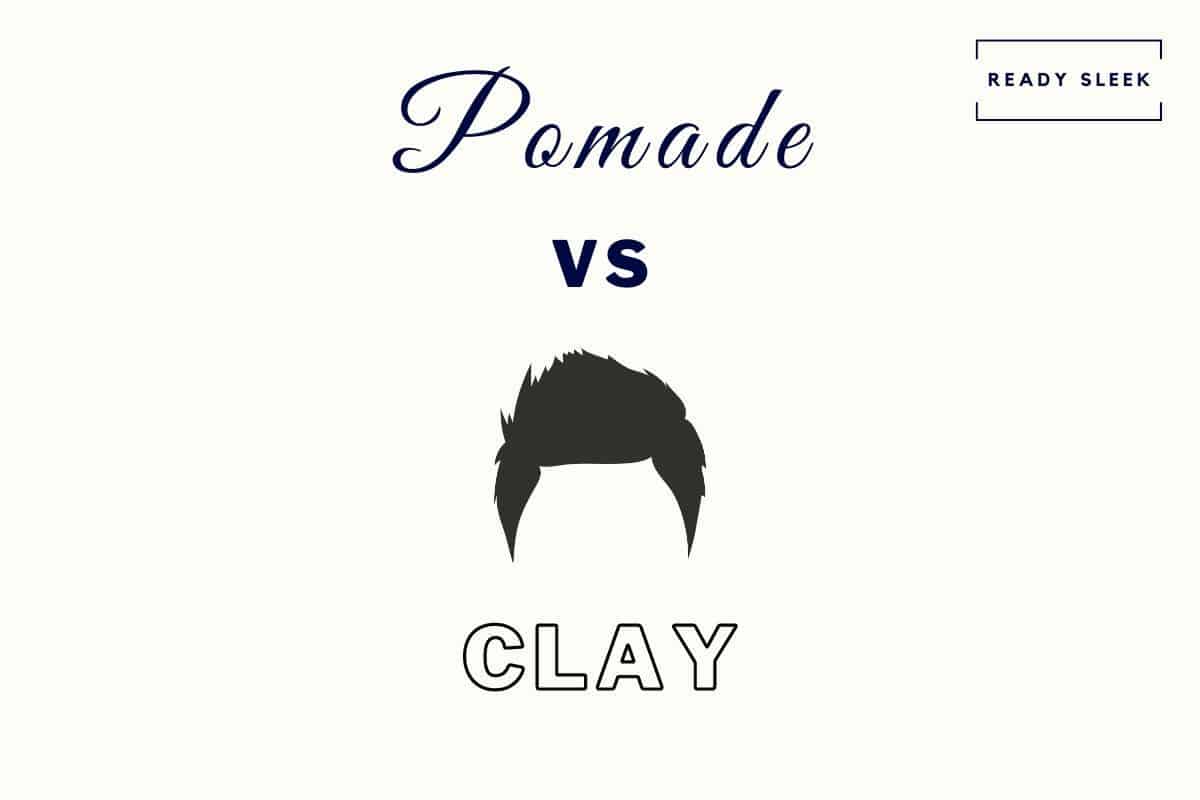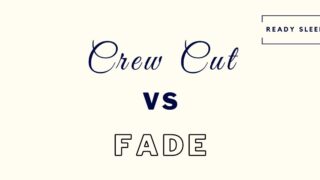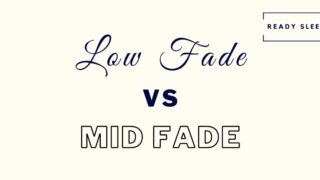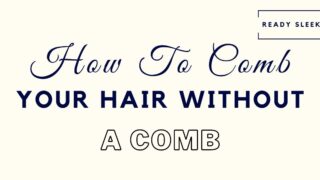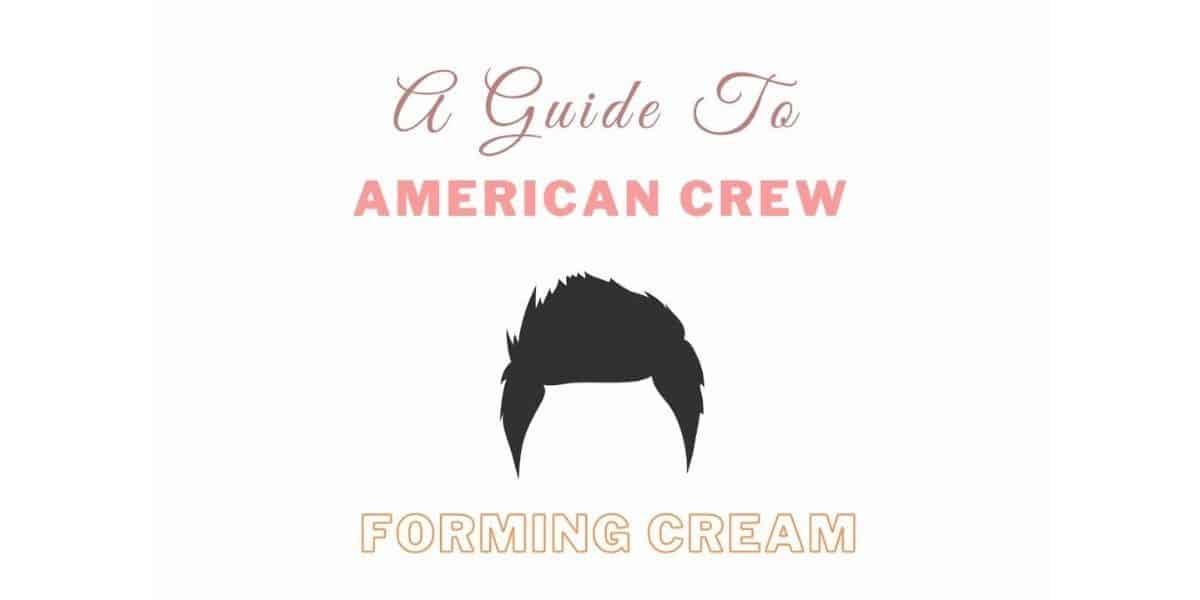These two hair products are both wildly popular. However, they’re generally popular among two separate groups of men, with separate likes and dislikes. So, should you use a pomade or a clay?
Clays are grittier in consistency than pomades and are better for textured and layered hairstyles requiring matte finishes. Pomades can feel gel-like or waxy in consistency depending on the type but are better than clays for more defined and slick styles requiring higher shine.
Although that’s the gist, it would be a good idea to dig into their differences a little deeper in order to really figure out which product would be right for you.
It may not be the case that one product is the “right” product for your hair. But it may be the case that one product may be more appropriate than the other at certain times and in certain situations.
In addition, the presence of water-based and oil-based products does complicate the comparison a little, as they act differently from each other as well.
Don’t worry – I’ll also be going through this difference as we go along.
So, here are 9 key differences between these products that you really need to know.
Let’s get to it.
Pomade Vs Clay: 9 Key Differences
Not all of these may be important to you, but there’s a very good chance that a few of them will be and may lead you to choose one product over the other.
Here’s a quick summary table for the main take away points.
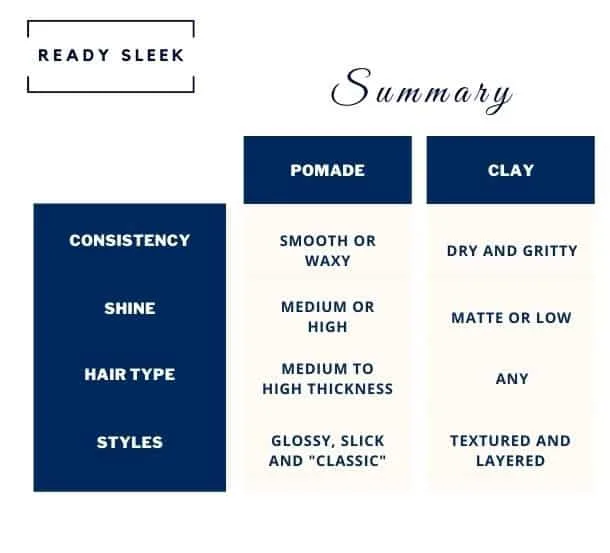
1. Ingredients
Right off the bat, it’s important to understand that both clays and pomades can be either oil-based or water-based.
Oil-based products have waxy ingredients such as petroleum, petrolatum, beeswax, or paraffin as their core and foundation.
Water-based products have water as their main ingredient, but will most likely have oily ingredients as well (eg. lanolin and castor oil) – just in much lower quantities.
This is true of both clays and pomades. When it comes to pomades, this is really all you need to know.
But what exactly makes a hair clay a clay?
That’s easy. It’s the presence of one of the two most common clay minerals used in hair products; kaolin or bentonite.
Although there are other clays that are used, these two are by far the most common.
The ingredients have a huge impact on how these products really behave, as you’ll soon find out.
2. Consistency
Water-based pomades have a smooth, gel-like consistency and oil-based pomades have a waxier, stickier consistency. Clays, on the other hand, are known for their dry, firm, and gritty consistency regardless of whether they are water or oil-based.
Having said that, you can expect an oil-based clay to be a little greasier than a water-based clay.
A water-based pomade will break down and emulsify very smoothly as you rub it in between your palms – just like a gel would.
A hair clay, on the other hand, will be tougher to scoop out of its jar due to the firmness. It’ll also feel thicker, drier, grittier, and bitty in between your palms.
Clay will take longer to break down because clay in itself is quite a dense substance.
Oil-based pomades are similar to clays in this respect. They may feel waxy and sticky as opposed to gritty, but they do take long to emulsify and break down just like clay does.
3. Application
Clays should distribute through the hair quite easily as long as they’re properly broken down beforehand. However, that dry grittiness will still most likely be felt. Pomades should also distribute through the hair easily, but water-based ones will definitely be smoother to apply than oil-based ones.
Oil-based pomades can be tough to break down – heat (eg. from a blow-dryer) is sometimes necessary to properly emulsify them and make them smooth enough to apply.
Some clays are smoother to apply and distribute through the hair than others. Clays with waxier ingredients included do tend to distribute more smoothly as it takes away some of that dryness.
Water-based pomades are much easier to apply than clays. They distribute very smoothly and quickly, with very little tack, tug, and pull.
4. Shine
Clays are known for matte, low-shine, or natural finishes, while pomades are known for glossy and medium-to-high shine finishes.
This is one area where pomades really do differ from clays.
Many men with modern hairstyles are drawn toward hair products with matte finishes and a strong hold. Hair clay is often the perfect option for them.
Pomades, on the other hand, are expected to produce at least a medium level of shine, but more often a high shine.
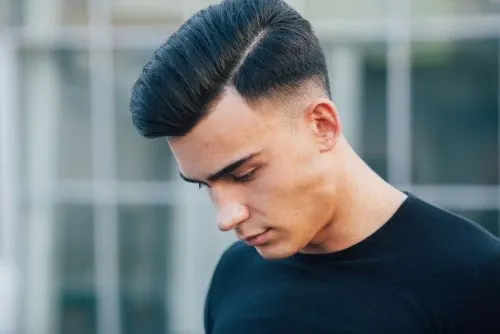
It’s all about glossiness, regardless of whether they’re oil-based or water-based. Having said that, you can expect a longer-lasting shine from oil-based ones.
The level of shine that pomades and clays produce is particularly relevant when it comes to hair thickness.
Men with thin or fine hair are usually better suited to products with matte finishes because excessive shine can reveal too much of the scalp. So, a clay would most likely be more suitable than a pomade.
But men who love those vintage 50’s hairstyles like slick-backs, side parts, and pompadours do look for a high shine, so pomades are a popular choice for them.
5. Hold
Both clays and pomades can have a heavy hold, with some clays and some pomades having heavier holds than others. How they differ is in the nature of their hold, with clays and oil-based pomades producing a pliable (moveable) hold and water-based pomades producing a stiff and dry hold.
Most clays and pomades can be expected to produce at least a medium-to-high hold, although they definitely vary in terms of quality and what they’re designed to do.
It isn’t that all clays necessarily have a heavier hold than all pomades or vice versa.
You can get clays with a very heavy hold, as well as some pomades with a very heavy hold.
But the fact that oil-based pomades and clays produce a pliable hold that can be restyled throughout the day will be important to some men.
The stiff and dry hold of water-based pomades does not usually allow for restyling unless some water is applied to soften it up (eg. with wet combing).
Newer, “unorthodox” water-based pomades do break the rules in that respect as they usually can be restyled. But with traditional water-based pomades, you won’t be able to.
Another thing to note about the hold that clays produce is that they can initially feel quite stiff after application. However, this usually settles down after 15 mins or so and you’ll be able to move it as you wish.
Plus, you’ll still most likely be able to feel some clay grit when you run your fingers through your hair throughout the day. Some men don’t like this, but it’s something that’s easy to get used to.
6. Texture
Clays will produce a lot more texture than pomades, perfect for more separated and layered styles. It’s ideal for messier, more tousled, and casual hairstyles, while the high shine and gloss of pomades are more suited to formal, slick, and defined hairstyles.

Pomades don’t produce anywhere near as much texture as clays do. This is one reason why men with more modern hairstyles are drawn toward clays and not pomades.
This isn’t to say that clays aren’t suitable for more “formal” looks, because they can be. You can use clays to add layering and texture if you want to, but you can also use them for more defined and tidy styles as well.
Clays are more versatile than pomades when it comes to texture because of this.
With pomades, you really won’t be able to add much texture without working pretty hard to create it. It’s possible but you’ll need time, heat, and a lot of brushing/combing.
7. Fullness And Volume
Clays will produce more fullness, lift, and volume than pomades.
One reason for this is that clay minerals such as kaolin and bentonite do plump up the hair and make it look thicker.
Plus, the layered and textured look that clays produce does make it look thicker and fuller.
But this doesn’t mean that pomades can’t be used to build volume. In fact, when it comes to styles where you want volume and gloss like pompadours, pomades are the go-to hair product.
But it does take effort and heat to do so. Plus, it’s a slicker kind of volume than the airier and lighter lift and fullness you’d get from a clay.
In general, pomades are better for styles where the hair needs to lay closer to the scalp, like slicked-back styles.
This is also one reason why men with thin or fine hair are drawn toward clays. It can make the hair look thicker than fuller than it would with a pomade.
8. Washing Out
Both clays and pomades can be easy to wash out, depending on whether they’re oil or water-based.
Oil-based clays will understandably be tougher to wash out than water-based clays but usually won’t require more than a shampoo rinse.
Oil-based pomades can be very difficult to wash out, depending on how heavy they are. It’s pretty common for multiple shampoo rinses to be necessary to really get rid of it.
Pomade purists and connoisseurs tend to love this because it means they can make their oil-based product last longer.
They need less of it over time as they can use the residual build-up of product accumulating in their hair, even after washing it.
9. Versatility
In general, clays can be considered a more “versatile” product than pomades. This is because they appeal to a wider range of men than pomades do, with varying hair thicknesses, lengths, and style choices.
Pomades are usually more appealing to men with hair that’s medium-to-high in thickness, medium-to-long in length, and men that are looking for gloss, definition, and slickness.
Although that does sound like a pretty wide net, it’s actually narrower than you might think.
Clays, on the other hand, are popular with men with a wide variety of hair types; thick, thin, long, short.
Yes, it’s better for those textured, layered, hairstyles, but it’s still definitely possible to create more tidy and defined styles as well.
Although men with thin and fine hair love how clay adds fullness, men with thick and long hair are also often drawn to its modern matte finish and the heavy hold it produces.
Pomade Vs Clay: How To Choose
If you’ve got thin or fine hair, go for a clay instead of a pomade. Clays will add fullness, while pomades would weigh it down, add shine, and make it look thinner.
Thin-haired men have a pretty easy decision for this reason.
But I usually treat this part as a summary of the differences and an opportunity to fit yourself into one camp over the other.
See whether you’re drawn towards one product more than the other after reading the following “criteria”.
You may find that you like elements of both of them; that’s fine. It’s pretty common for men to use both products at different times and in different situations.
“Typical” Pomade Users:
- Hair that’s medium-to-high in thickness (the shine may reveal too much of the scalp in thin-haired men).
- Hair that’s medium-to-long in length (long enough to slick).
- Prefer medium-to-high shine and a “glossy” finish.
- Prefer slickness and definition.
- Prefer more “classic”, tidy, and formal hairstyles.
“Typical” Clay Users:
- Hair of any thickness, although thin-haired men would especially benefit from the added fullness and lift.
- Hair of any length.
- Prefer a matte or low-shine finish.
- Prefer a textured and layered finish.
- Prefer more modern and messy hairstyles, although it’s still possible to produce definition and tidiness if desired.
Conclusion
Choosing between two products doesn’t need to be complicated.
As you can see, they can easily be broken down into their key features and it’s quite common for men to find one set of features more appealing than the other.
This is definitely true when it comes to pomades and clays. The two products are so different that you may well find one of them a lot more suitable for your hair than the other.
If you like both of them but for different reasons, that’s absolutely fine. Plenty of men have a stock of both.
If you still aren’t sure, try both of them out and find out which one you prefer. There’s no substitute for really getting some first-hand experience.
Enjoy.
Ready Sleek founder. Obsessed with casual style and the minimalist approach to building a highly functional wardrobe. Also a fan of classic, vintage hairstyles.

